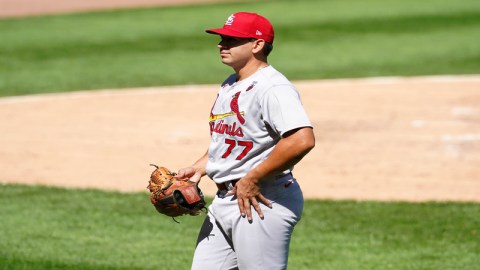If you had to walk down a dark alley at night, John Delgaudio would be a good person to have by your side. The 37-year-old MMA fighter and trainer out of Long Island, N.Y., knows a little bit about self-defense.
How did you get your start in the sport? How long have you been competing?
Well, I’m a black belt under Matt and Nick Serra. I started my training with them about eight years ago here on Long Island, and I’ve been with them ever since. I was competing about six months in from when I started, but I’ve slowed down now that I’ve gotten a bit older.
What’s your motivation to train? Is there anyone in particular that inspires you?
I just really love the daily competition of training and testing my skill. Jiu-Jitsu is kind of an athletic form of chess that tests your reasoning ability. Your ability to process and act upon all possible outcomes quicker than your opponent is, in many cases, the determining factor in deciding who will win the match.
Of course Matt and Nick Serra have inspired me to train. Outside of that, I really enjoy watching guys that are always pushing the boundaries of Jiu-Jitsu and exploring new techniques. Guys like Marcelo Garcia, Terere (when he was competing), Leo Vieira, and Cobrinha are all guys that I find exciting to watch.
What was the most difficult aspect of training you’ve encountered?
I think the most difficult thing for any athlete in this type of sport to deal with is injuries. Dealing with a serious injury when you’re someone who loves training and competing on a daily basis is difficult. Over the years, I’ve had some pretty significant injuries, and I can tell you that there is no worse feeling than having to sit on the sidelines for an extended period of time while all of your teammates are out there training and getting better.
What was your toughest victory?
Toughest victory would be difficult. Many were tough for various reasons. The toughest loss I had was probably in the 2007 BJJ Worlds [Brazilian Jiu-Jitsu], when, during my quarterfinal match, I suffered a head and neck injury that led to me being disqualified. Later, I learned I had fractured two vertebrae and a herniated a disc, which kept me out of action for some time.
When did you start training students? What have you learned from that?
I started teaching a couple of years into my training. Teaching was probably the most significant event in my progress in the sport. It forced me to have to break down each step within a particular technique and ask myself, “Why is this step important in the move?” It made me think about what counters were available against the technique I was showing and how they could be defeated. Eventually, all of those techniques and subsequent counters became fresher and fresher in my mind, which allowed me to react quicker during my own training and competition. In Jiu-Jitsu, as with many other sports, a person’s timing and sensitivity are more important than knowing every move in the book. A guy who has good timing and sensitivity with the fundamentals is more dangerous than the guy who knows a bunch of flashy moves but can’t put them all together.
You’ve spent some time in Thailand. What do you think we could learn from the fighters in the East?
I think fighters over there have a bit of a different mentality. Opportunities can be scarce over there, and kids are fighting professionally at a very young age in order to help support their families in many cases. For many, fighting in Thailand can be more about survival and providing for your family than anything else. Over the course of a career, a fighter in Thailand could potentially have more than 200 fights. I don’t know if you’ll see too many MMA fighters who have more than 200 fights over the course of their career here in the States.
What changes have you noticed in MMA from its earliest beginnings until now?
From a Jiu-Jitsu perspective, I think a lot has changed. I think there are very few people at the highest levels of the sport who can win a fight from the closed guard. Guys have become very aware of staying out of submissions when in someone’s closed guard. It takes a special Jiu-Jitsu talent to consistently submit and sweep guys from the guard position in MMA. On top of that, when you look at it from a judging perspective being on your back — even if you’re threatening your opponent with submissions — will most likely cost you the round in the eyes of the judges. Getting back to your feet from your back and controlling your opponent from the top position have become paramount to victory MMA.
Any parting words for young athletes getting started in the sport?
I think some people that get into the sport of MMA think they’ll take a few Jiu-Jitsu classes, work a few takedowns, do some sparring and get a fight within six months. The reality is it takes a long time to become proficient at every discipline necessary to be successful in MMA. It also takes time to put all of those disciplines together for an MMA fight. Being able to transition from boxing to wrestling to Jiu-Jitsu in a fight is another skill all in itself. If you’re thinking about fighting, take time to really learn the techniques in each discipline. After a while when you start to feel comfortable with what you’ve learned, take an amateur Muay Thai or boxing fight, then compete in a bunch of grappling tournaments. Get used to competing in those types of events and the stresses that go along with it before you jump onto the MMA scene. The experience will be invaluable.



